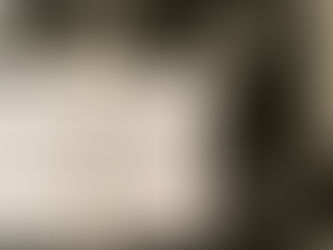Vaux-le-Vicomte and the Swallows
- Charles Drazin
- Jun 23
- 4 min read

I hadn’t seen the house in fifteen years. I was invited to visit again last Saturday to talk to a tour party about Nicolas Fouquet, the brilliant finance minister of the young Louis XIV. I had written a book about his rise, and then dramatic fall, at the hands of a vengeful and jealous King. It was Nicolas who had the idea to build France’s most beautiful château and brought together the team of artists who realised his vision – the architect Louis Le Vau, the painter Charles le Brun and the landscape gardener André Le Nôtre.
I wrote a book about him, The Man Who Outshone the Sun King. Returning on the longest day of the year, I was pleased to find that the house was helping to justify the book’s title. As far as burnished domes went, it would be hard to beat the one that Nicolas had built.
After we had walked around the house, someone in the group asked me what had been my most lasting impression of the day. I said something about the extraordinary balance and measure of the place – the perfect integration of different elements, whether house, garden or more distant nature.

But when I went back outside into the garden to take one final look, what I saw served at once to supersede my answer. Swooping back and forth about the great dome – undeterred by all the dazzle – was the sight of a flock of swallows in constant, head-spinning motion.
It brought back to me a memory of fifteen years before when Patrice De Vogüé, the then owner of the house, took me into the interior of the dome and then outside on to the cupola above. Suddenly, there were hundreds of little birds diving and soaring in the breeze – close enough, but far too fast – to touch. It was an incredible, exhilarating sensation to be up there in the midst of such extraordinary creatures, living their life on the wing about us.
Although Patrice died a few years ago, the swallows’ continued presence at Vaux seemed to me to be a blessing. They were obviously satisfied that the house was still in good hands. But also they offered a symbol of the innocence and danger that were at the heart of Nicolas’s story.
The first person to celebrate Vaux-le-Vicomte was the poet Jean de La Fontaine. Before the work on the house and garden had even been finished, at Nicolas Fouquet’s request, in 1659 La Fontaine began to write a long poem, The Song of Vaux, in which he described the wonders of the place. If there is no mention of any swallows, it’s because they would not have taken kindly to the hammering of workmen in a house that was still being built. They arrived only much later after Nicolas had already been disgraced and imprisoned.
When La Fontaine finally did write about swallows – in 1668, seven years after Nicolas’s arrest on 5 September 1661, the young king’s birthday – it was with a note of warning that was, to some degree, a response to the terrible fall that his benefactor had suffered.
“The Swallow and the Little Birds” appeared in the first volume of La Fontaine’s Fables, which he dedicated to the six-year-old son of the Sun King: “You are of an age when Princes are allowed to enjoy fun and games,” La Fontaine wrote, “but at the same time, you should give thought to more serious things. Both can be found in the tales of Aesop. They are childish, but within their childishness are contained some important truths.”
To read Aesop, La Fontaine thought, was a way “to sow the seeds of wisdom in a soul”.
“The Swallow and the Little Birds” was taken from Aesop, but at the same time it was as much La Fontaine’s own song of experience written in the aftermath of Fouquet’s fall:

When a farmer sows some hemp seeds in a field, a wise swallow tells the other birds to make sure to eat up all the seeds. Otherwise they will live to regret it. But the little birds, well fed from the other fields, are too busy flitting about and enjoying themselves to pay any attention to the warning. Once the hemp has grown, it is made into nets and snares.
“The little birds, tired of listening, began to chatter like the Trojans did when poor Cassandra made her prophecy, and many of them were trapped. We listen only to our own instincts, and do not recognize danger until it is too late.”
The little birds are pretty difficult to see, and even more difficult to photograph, but it will long be a pleasure – and a warning – to remember the sound of their chattering.
For La Fontaine’s original fable in French, see: L'hirondelle et les petits oiseaux (livre 1, fable 8) or, in English translation, The Swallow and the Little Birds.












Comments